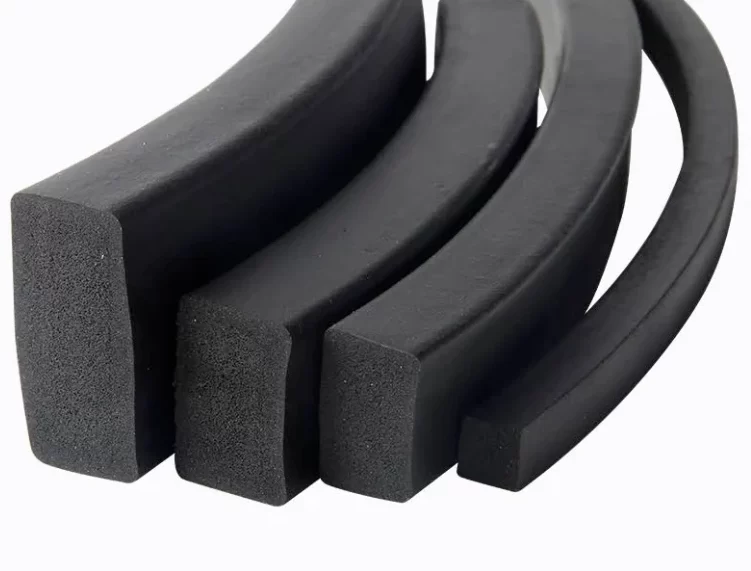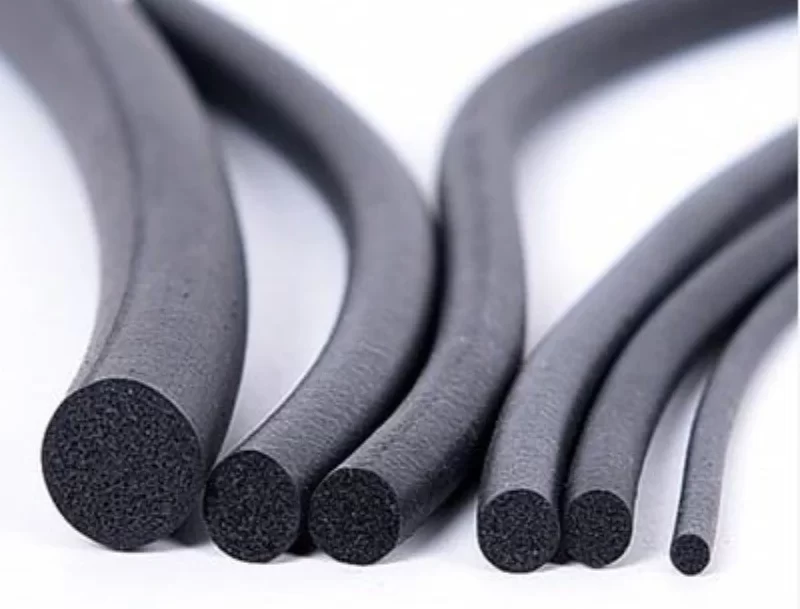When choosing between PE (Polyethylene) sponge and EPDM (Ethylene Propylene Diene Monomer) sponge, understanding their properties and ideal use cases is crucial. Both materials serve different purposes in industries like packaging, automotive, construction, and HVAC.
In this blog, we’ll compare PE sponge and EPDM sponge in terms of material composition, physical properties, durability, and applications to help you make an informed decision.
1. What Are PE Sponge and EPDM Sponge?
PE Sponge (Polyethylene Sponge)
- Made from polyethylene, a lightweight, flexible thermoplastic.
- Typically has a closed-cell structure, making it water-resistant and buoyant.
- Common in packaging, insulation, and cushioning applications.

EPDM Sponge (Ethylene Propylene Diene Monomer Sponge)
- Made from synthetic rubber, known for its durability and weather resistance.
- Available in open-cell (breathable) or closed-cell (waterproof) forms.
- Widely used in automotive seals, roofing, and outdoor gaskets.

2. Key Differences Between PE Sponge and EPDM Sponge
(1) Material Structure & Density
| Property | PE Sponge | EPDM Sponge |
|---|---|---|
| Cell Structure | Closed-cell (water-resistant) | Open or closed-cell options |
| Density | Low (20–200 kg/m³) | Medium to high (50–500 kg/m³) |
- PE sponge is lighter and more compressible, ideal for packaging.
- EPDM sponge is denser, offering better sealing and durability.
(2) Temperature Resistance
- PE Sponge: Softens at 80–100°C; not suitable for high heat.
- EPDM Sponge: Withstands –50°C to +150°C, perfect for extreme weather.
Best for high heat? → EPDM sponge wins.
(3) Chemical & Weather Resistance
- PE Sponge:
- Resists acids and alkalis but degrades under UV/ozone exposure.
- EPDM Sponge:
- Excellent UV, ozone, and weathering resistance; ideal for outdoor use.
Best for outdoor applications? → EPDM sponge wins.
(4) Elasticity & Compression Recovery
- PE Sponge: Compresses easily but may deform permanently.
- EPDM Sponge: High elasticity; bounces back after compression.
Best for sealing and gaskets? → EPDM sponge wins.
(5) Cost Comparison
- PE Sponge: More affordable (common plastic).
- EPDM Sponge: More expensive (premium rubber properties).
Budget-friendly option? → PE sponge wins.
3. Best Applications for Each Sponge
When to Use PE Sponge?
✔ Packaging – Lightweight cushioning for fragile items.
✔ Floatation devices – Closed-cell structure repels water.
✔ Thermal insulation – Low-cost solution for indoor use.
When to Use EPDM Sponge?
✔ Automotive seals – Resists heat, oil, and weather.
✔ HVAC gaskets – Maintains seal under temperature changes.
✔ Roofing & construction – UV and ozone-resistant for long-term outdoor use.
4. Conclusion: Which One Should You Choose?
| Factor | PE Sponge | EPDM Sponge |
|---|---|---|
| Cost | ✔ Lower | ✖ Higher |
| Heat Resistance | ✖ Low | ✔ Excellent |
| UV Resistance | ✖ Poor | ✔ Excellent |
| Elasticity | ✖ Low | ✔ High |
| Best For | Indoor, packaging | Outdoor, sealing |
- Choose PE Sponge if you need a budget-friendly, lightweight material for packaging or short-term use.
- Choose EPDM Sponge if you require durability, weather resistance, and elasticity for automotive or outdoor applications.
By understanding these differences, you can select the right sponge material for your project.
Final Thoughts
PE and EPDM sponges each have their advantages. Your choice depends on budget, environment, and performance needs. If you need further guidance, please contact us to ensure optimal performance.

